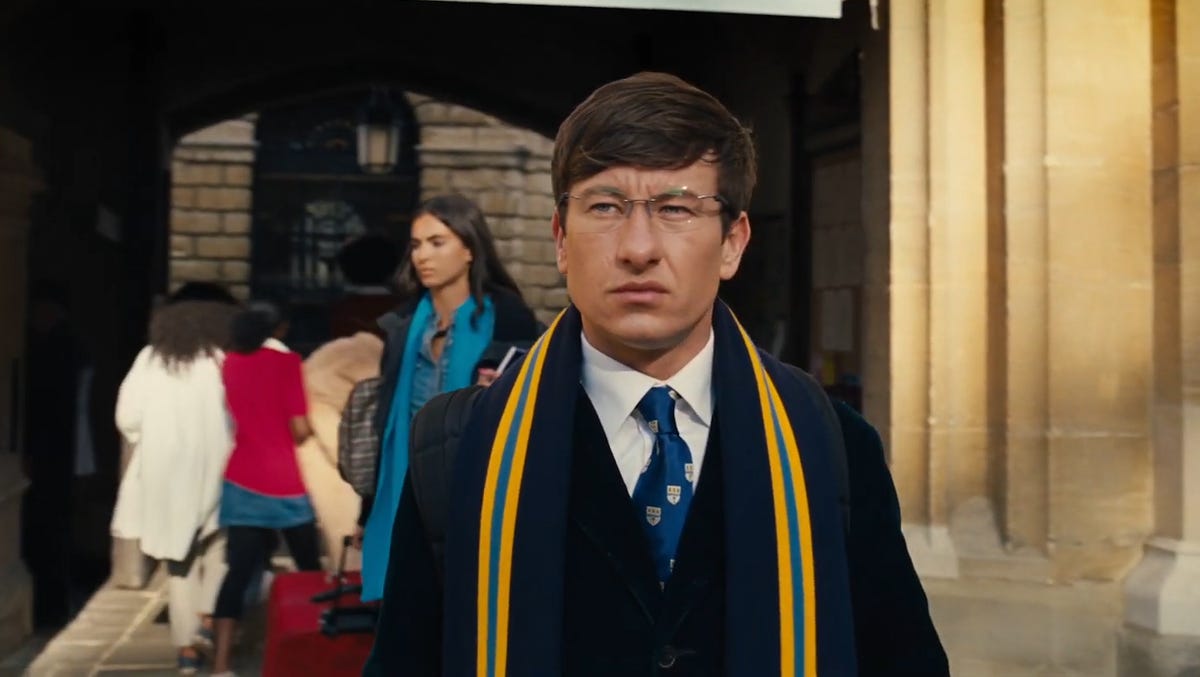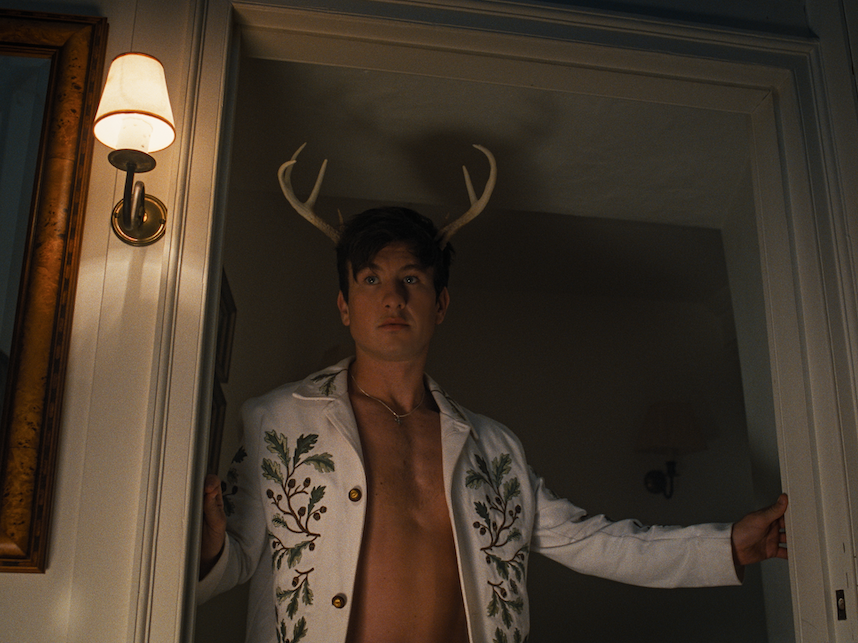Having just watched Saltburn for the first time (an hour ago as I begin typing), I feel absolutely compelled to share my intense admiration for the costumes of this ultimately beautiful film. Having not read a single review or explanation of the costume design, I thought I'd share my unbiased perspective on this work of art. Spoilers inbound!
Let's Begin
All I knew of this film before I sat with my popcorn was it’s queer themes, mid-2000’s setting, and supposedly gorgeous cinematography. What I didn’t contemplate was how much the styling direction would have me appreciating the (overwhelmingly incredible) film and it’s use of costume as a red herring for it’s plot.
The film begins and we see Oliver in a not-so notable shirt and vest combo. Along with the angular glasses and overall preppy aura for the first day of college, it was clear he’d be considered an outcast amongst the juicy tracksuits and festival band wrists, nothing new here. Yet what makes this choice so clever, with hindsight of course, is the questioning of whether this was another part of his calculated plan to appear ‘lesser than’ from head to toe. First impressions are everything. If he dressed like a ‘normal’ young adult he wouldn’t have gained the sympathy vote from Felix as an ‘unalarming nobody just looking for a friend’.

The Next Step
During Oliver’s latching onto Felix, his fashion sense eases into the more average styles of his age. Wearing a Jack Wills hoodie as his geeky friend comments on his changing ways, it’s almost as if he wants to be seen as influenced to further push the narrative of being naive.
As Oliver finally arrives at The Saltburn Mansion to find Felix had already picked out a dinner jacket for him, it’s clear to see that Felix is well and truly under Oliver’s spell of being a poor orphaned nobody. I mean, who wouldn’t believe it? If this is the mid 2000’s and the kid has only just been able to get a Jack Wills hoodie alone, there’s no chance of him owning a dinner jacket.
For me, the almighty climax in costumes was the birthday party. (Having just found out Oliver lied about his family circumstances, there was extra focus on this part). Felix, wearing a simple white vest and jeans with a pair of gold wings, lacking hindsight made me think “ah yes the golden boy that everyone adores, of course he’s an angel”. Oliver on the other hand, wearing an embroidered jacket with antler headband, gave me the immediate thought of a deer in headlights; he’s in the danger zone. Understanding the aftermath of that night, Felix’s angel outfit gives me full faith in the intentions of these costumes for relevance to the plot. The angel wings weren’t a nod to his popularity, they were a direct insinuation of his fate.

The Plan Unravels
The scene in which we see Oliver sat in the cafe, having pre-planned this coincidental scheme, his simple blue polo shirt reminds me of the ‘dressing rich’ concept: what we expect to see of wealthy individuals is often the opposite of our beliefs, they dress like anyone of any income in order to hide their wealth. Oliver, having played his cards right and gaining a large cheque from the Saltburn household already, dressed in a simple blue polo to deter Elsie from having any assumptions of his financial state since they last met.
Having spent the film witnessing narration cutscenes of Oliver in a plain shirt and blazer, we come to the conclusion that he’s in the final stage of his plan. With every cutscene featuring this outfit throughout the film, there’s no indication of where his life has got him as he’s speaking. A simple shirt and blazer, with no tie at the unfastening of his top button, could indicate that he’s speaking to a lawyer just as much as a psychiatrist. As the plot unfolds it’s easier to believe the twisted concept of a ‘win’ for him, whatever that would mean. Yet still, the act of taking off his blazer to cut the life of Elsie was no where near the outcome I could think of from dress code alone.
Finally, with all of Oliver’s hurdles out of the way, he no longer has to put on a front and is free to do as he pleases (in reference to the nude dancing of course). The lack of clothing emphasises his ultimate twisted freedom within this mansion he’s carefully obtained. As Murder on The Dancefloor plays whilst he’s frolicking from room to room, the stripping of any perceivable garments cuts ties with his alter egos and pushes the question of who this guy really is. The naked bow in front of the dancing puppets is a sadly humorous parallel of a greek tragedy. I did not think I’d be coming out of this film annotating the significance of a nude scene as a styling choice, yet here we are.
The Final Verdict
Overall, I’m surprised I’ve managed to type this many words over a film I’m still baffled by the morning after. There’s no doubt I’ll be continuing to think of this film’s impact for days to come, so I would greatly like to hear your input on it!

